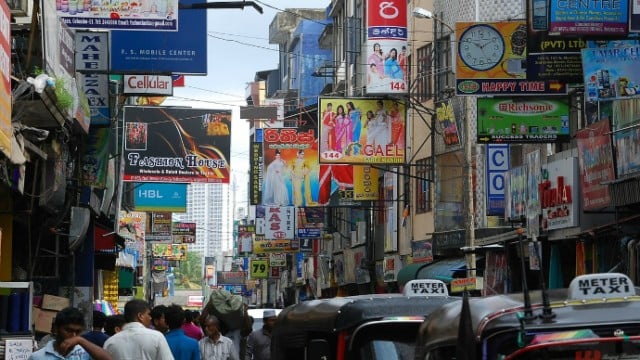India saw US$7.7 billion in VC funding in 2015 compared to Southeast Asia’s US$1.6 billion

A new report released by Singapore-based VC Jungle Ventures showed that Southeast Asia’s tech investments trail behind India’s despite having a stronger and more conducive tech ecosystem.
In 2015, India saw VC funding reach US$7.7 billion, eclipsing Southeast Asia, which logged only US$1.6 billion.
The huge funding appetite can be attributed in part to India’s large internet population of 350 million (100 million more than Southeast Asia’s). A sizeable portion of that US$7.7 billion was channelled into consumer-facing channels including fashion tech (104 startups), online travel (87 startups), local services (90 startups) and logistics tech (86 startups).
Yet this figure is also deceptive; the country’s internet penetration is actually lower than Southeast Asia, only 18 per cent of Indians are online compared to 49 per cent in the latter.
Connection speeds are also poorer. India’s internet connection clocked an average 3 MBPS, while in Malaysia is 5 MBPS, and in Singapore, that figure is nearly 14 MBPS.
In the mobile space, India also has some ways to catch up. Less than 20 per cent of Indians have a mobile 3G/4G connection, while in Singapore and Thailand, nearly everyone is hooked on speed.
Also Read: What do Venture Capitalists want? Getting under the skin of Asia’s most influential VCs
Slow internet connections naturally lead to a wide disparity in social media usage: Southeast Asia clocked 222 million users while India has only 139 million.
Indeed, Southeast Asia’s tech environment, at a macro view, actually looks more attractive than that of India’s.
More business, more innovations
On the consumer side, Southeast Asians are far more affluent their Indian counterparts, with GDP in its main cities more than twice of India.
Singaporeans spent an average of US$5,585 on retail in 2015, and in Malaysia, the figure was US$3,329. India is far behind, at only US$787 (though higher than Philippines, which only clocked US$358).
Credit card and debit card ownership in Southeast Asia is also at least twice that of India’s (only 22 per cent of Indians owned debit cards compared to Southeast Asia’s 43 per cent).
In terms of “ease of doing business”, India ranks near the bottom at 130th, while Southeast Asian countries including Singapore (1), Malaysia (18) and Thailand (49) are way ahead.
Even other developing markets such as Vietnam (90), Philippines (103), and Indonesia (109) have better environments for businesses.
India’s B2B commerce and trade have suffered as a result. Its manufacturing output and exports are the lowest among Indonesia, Malaysia, Philippines, Singapore, Thailand, and Vietnam — at only 17.1 per cent and 23.2 per cent of its GDP.
So, what is the deal here? Why, despite all the above factors, is India’s funding climate more lively?
India, the second biggest internet population on the planet
For investors, India’s sheer population size is a huge motivator. As mentioned previously, India’s internet population is huge — the second biggest internet market, just behind China.
“From a long-term investment perspective and having seen how China is playing out India becomes a no-brainer investment destination. Unfortunately, this has also to some extent resulted in ‘hot money’ like hedge funds participating directly in investments through most of 2014-15 in India, similar to the US market. Such investors have since cooled off considerably,” says Yash Sankrityayan and Associate at Jungle Ventures.
Also Read: Watching baby unicorns grow up: The state of investment in Southeast Asia
India also has a more mature tech ecosystem, especially in terms of tech talent.
“Most market-leading consumer internet businesses in the key sub-sectors (horizontals, classifieds, various verticals) in India, started on average 2-plus years before the same in Southeast Asia.
Therefore, there has been more companies focussed on the large opportunity sub-sectors for 3-5 years by now and this has built a bigger ecosystem of founders as well as startup teams and employees experienced in building products and rapidly scaling businesses,” says Sankrityayan.
“In India, this has also been significantly helped by the availability of a lot of engineering talent and people who have worked at the leading MNCs on global products, and have been moving out to start or join exciting startups,” he adds.
Southeast Asia, while progressive in some areas, is still hindered by the wide cultural and economical differences in each market. For a company to establish itself well in Southeast Asia, it has to individually tackle 5 to 6 markets.
“Even India is not exactly a uniform market since significant variances exist in language, social nuances and local permits/ regulations across parts of India, but these are not major hindrances to business growth if solved for smartly,” says Sankrityayan.
Clearly, there are big market opportunities in Southeast Asia to fill, given that its fundamentals are strong. It may be only a matter of time before the region overtakes India as the funding hotspot in Asia.
“We [Jungle ventures] feel confident that there is an opportunity to build regional category leaders in SE Asia and an opportunity for investors like us to partner to help build the same. Global and regional investors and corporates are also starting to notice this as is clear from the larger fundraises and M&A activity in the last 2 years in Southeast Asia,” concludes Sankrityayan.
—
The post India tech fundings dwarf SEA despite a weaker business and innovation environment: Jungle Ventures Report appeared first on e27.